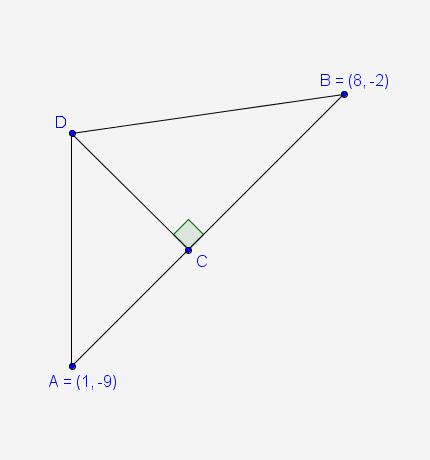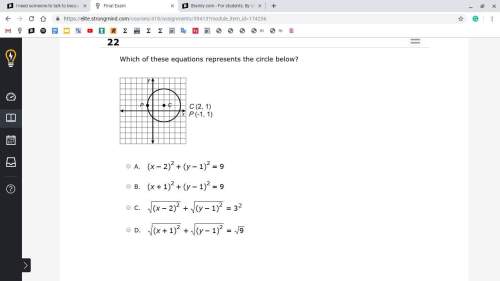Which description matches the transformations y = cos x undergoes to
produce y = -3 cos(x) + 1...

Mathematics, 18.05.2020 00:57 luisanavarrogarcia
Which description matches the transformations y = cos x undergoes to
produce y = -3 cos(x) + 1 ?
A. Reflection across the y-axis, vertical shift up by 1 unit, horizontal
shift right by 3 units
B. Vertical stretch by factor 3, reflection across the x-axis, then a
vertical shift up 1 unit
C. Horizontal compression by factor 3, vertical shift by 1 unit up, then
a reflection across the x-axis
D. Horizontal shift left 3 units, then vertical shift up by 1 unit

Answers: 1


Other questions on the subject: Mathematics

Mathematics, 21.06.2019 16:50, hernsl0263
Which three lengths could be the lengths of the sides of a triangle? 21 cm, 7 cm, 7 cm 9 cm, 15 cm, 22 cm 13 cm, 5 cm, 18 cm 8 cm, 23 cm, 11 cm
Answers: 2


Mathematics, 21.06.2019 21:30, Caixiayang3613
Look at the figure below: triangle abc is a right triangle with angle abc equal to 90 degrees. the length of ac is 5 units and the length of ab is 4 units. d is a point above c. triangle adc is a right triangle with angle dac equal to 90 degrees and dc parallel to ab. what is the length, in units, of segment cd?
Answers: 1

Mathematics, 21.06.2019 21:40, dededese2403
Astudy was interested in determining if eating milk chocolate lowered someone's cholesterol levels. ten people's cholesterol was measured. then, each of these individuals were told to eat 100g of milk chocolate every day and to eat as they normally did. after two weeks, their cholesterol levels were measured again. is there evidence to support that their cholesterol levels went down? how should we write the alternative hypothesis? (mud = the population mean difference= before - after)a. ha: mud = 0b. ha: mud > 0c. ha: mud < 0d. ha: mud does not equal 0
Answers: 1
You know the right answer?
Questions in other subjects:


Biology, 24.11.2019 11:31

Social Studies, 24.11.2019 11:31


English, 24.11.2019 11:31

Mathematics, 24.11.2019 11:31

Mathematics, 24.11.2019 11:31








